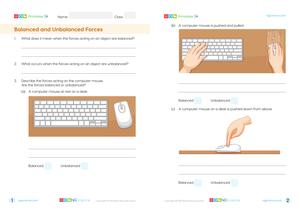Begin the lesson by introducing Sir Isaac Newton, a pivotal figure in the scientific revolution of the 17th century. Highlight his contributions to mathematics, optics, and astronomy, setting the stage for understanding his laws of motion.
Go to the LessonLearning Objectives
- Understand the historical significance of Sir Isaac Newton and his contributions to science during the 17th century.
- Explain Newton's three laws of motion and how they describe the relationship between forces and the motion of objects.
- Describe how Newton's work on gravity provided insights into the motion of celestial bodies, such as the moon and planets.
- Identify real-world examples that illustrate Newton's laws of motion.
Introduction and Hook
Engage students with a brief story of how Newton's curiosity about a falling apple led to his groundbreaking work on gravity and motion.
Direct Instruction
Explain Newton's three laws of motion, using simple language and examples to illustrate each law's significance in describing the relationship between forces and motion.
Discuss how Newton's work on gravity provided insights into the motion of celestial bodies, such as the moon and planets.
Guided Exploration
Watch the video 'Forces and Motion – Magnitude and Direction' to explore how different forces affect the movement of objects. This video helps students understand the principles of physics in everyday life.
Engage in a guided discussion about real-world examples that illustrate Newton's laws of motion, encouraging students to identify these examples in their daily lives.
Hands-On Activity
Conduct a hands-on activity where students design and test homemade parachutes to observe the principles of terminal velocity and air resistance in action.
Independent Practice
Assign students to complete the 'Forces and Motion' assessment to reinforce their understanding of how forces affect motion.
Encourage students to observe and document examples of Newton's laws in action in their environment, such as a rolling ball or a swinging pendulum.
Check for Understanding
Facilitate a class discussion to review key concepts and address any misconceptions about Newton's laws of motion.
Review and Reflection
Have students reflect on what they learned about Newton's contributions to science and how his laws of motion apply to everyday life.
Encourage students to share their observations and insights from the independent practice activity, fostering a collaborative learning environment.
Assessment and Extension
Administer the 'Newton’s Laws of Motion' assessment to test students' comprehension of inertia and Newton's first law.
Try the QuizProvide extension activities for students who wish to explore further, such as researching Newton's impact on modern science or conducting experiments related to gravity and motion.





